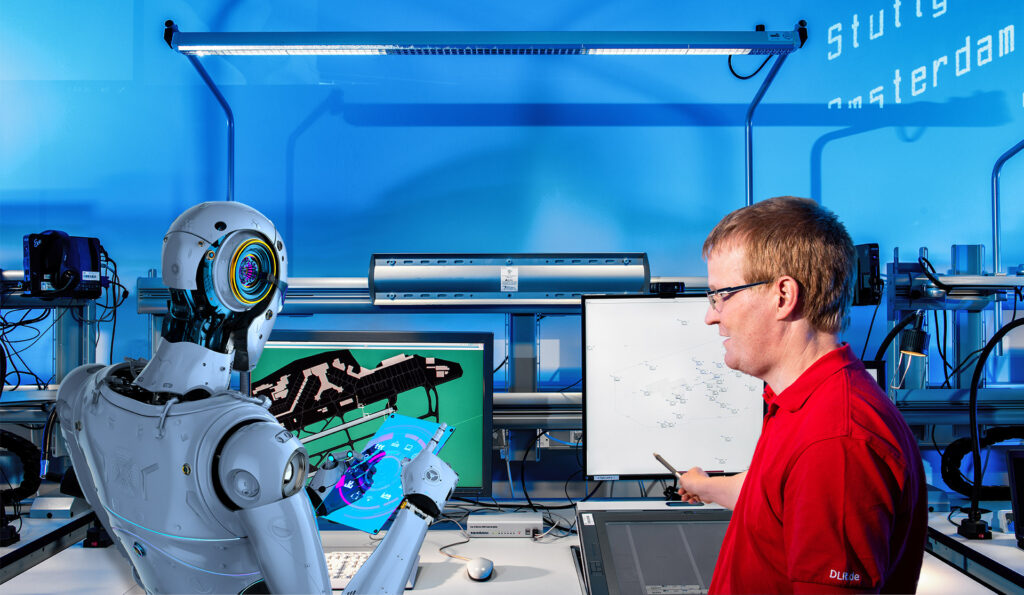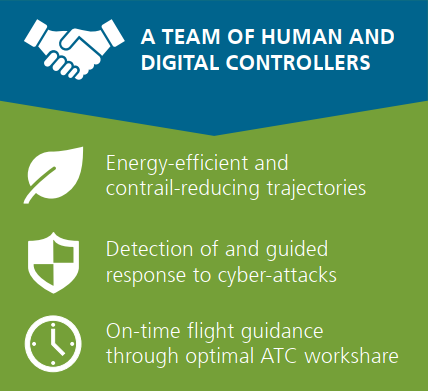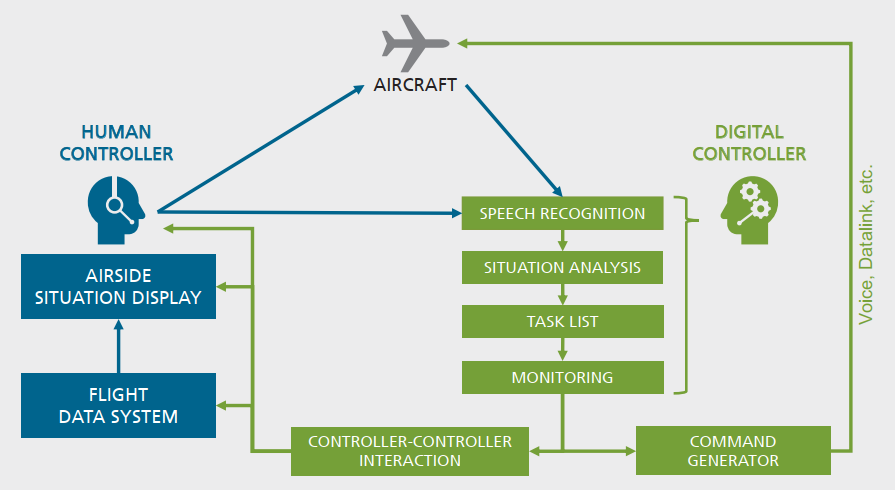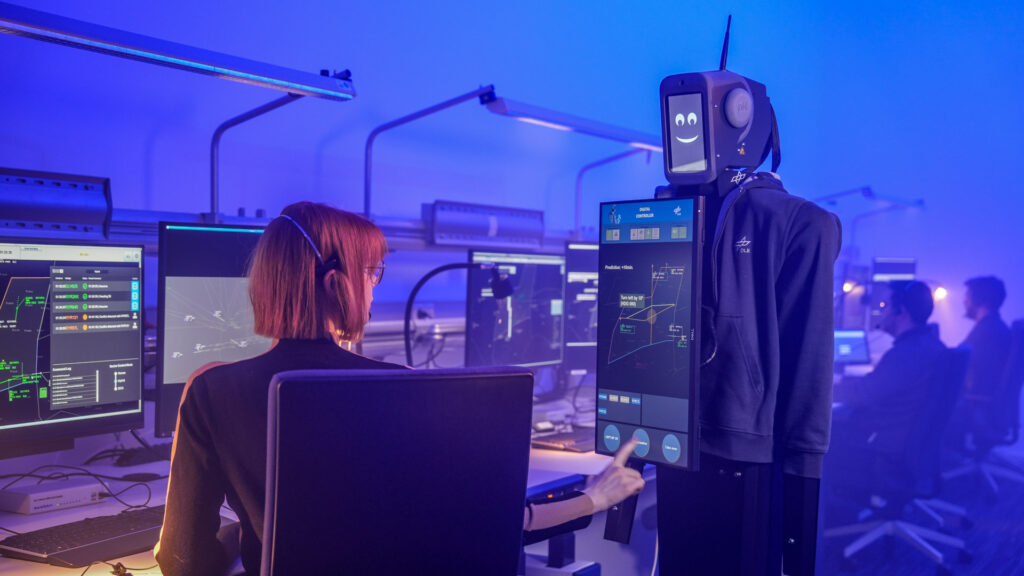DLR’s Digital Controller
A Game Changer in ATC
DLR’s Digital Controller
A Game Changer in ATC

Aviation is required to find measures against the climate change, rising traffic volumes and shortages of professional staff. Great potential for solutions and counteractions lies within high levels of automation. DLR’s research in the field of air traffic control aims to reveal and evaluate these potentials. DLR’s Digital Controller is a key solutions which will enable flight trajectories to be energy-efficient and contrail-reduced. Moreover, it will provide detection of cyber-attacks through permanent data monitoring. Last but not least, already occurring staff shortages in air traffic control, as reported by EUROCONTROL’s performance review unit, can be counteracted by teaming human and digital controllers.
Swift Contributions of Air Traffic Control to Sustainable Air Transport

The above-mentioned challenges affect the very foundations of the air transport system. Due to the update cycles of airline fleets and necessary political agreement, it will take time until long-term solutions such as electric aircraft can be deployed. In contrast to long-term solutions, the Digital Controller has the advantage that it can unfold its potential quickly and contribute within a short time to a sustainable air transport. Human resources can be focused on the most challenging tasks while the digital controller assists and takes over responsibility where it is of benefit for the human controller.
Currently, controllers are required to perform a wide range of tasks that could be performed equally well or better by standard rule-based algorithms. For example, commanding frequency changes, monitoring of aircraft movements and conflict resolution. By using modern digital techniques such as machine learning and artificial intelligence, algorithms can perform even complex tasks such as assessing pilot stress, calculating individual emissions and deciding between multiple complex options.
There are two keys to unlocking this potential: First, reliable and efficient communication must be established between the human and the digital controller. Second, the transition from today’s operation to a highly automated operation, including digital controllers, must be defined.
DLR has paved the way for these future operations by introducing automated speech understanding and generation. This enables digital controllers to communicate with other controllers and pilots. In addition, DLR has defined a roadmap for air traffic control: As a first step, this leads from the present setup with two human controllers per sector towards operations with a single human controller. In a second step, areas are established where the digital controller is fully responsible and acts autonomously.
Single-Controller Operations
Single-controller operation in principle defines the digital controller as an assistant to the human operator. The work-share can be established by delegation based on time, area, task or complexity. A time-frame or area can be delegated when the human controller assesses the digital controller as being capable of handling the current traffic. A delegation of tasks (e.g. frequency change, flight level monitoring) or traffic volumes up to a certain complexity do not require the judgement of the human controller, but a constant interaction to ensure that the traffic is handled in a safe, orderly and expeditious manner.
DLR has implemented a prototype of the digital controller for single-controller operations to evaluate the feasibility of the different delegation modes. The evaluation will take place in summer 2024 using DLR’s human-in-the-loop simulation. The digital assistant uses speech recognition and understanding to follow the human controller’s commands. Together with flight and radar data, a picture of the situation is derived. A task list is generated on the basis of this picture. Depending on the delegation mode, the digital assistant performs specific tasks of a certain complexity or tasks within its area of responsibility. Methods such as attention guidance, sonification and a negotiation monitor are used to interact with the human controller.

Autonomous Digital-Controller Operations
For autonomous digital-controller operations the used decision algorithms have to be adapted extensively. While rule-based decision algorithms may in some cases be sufficient for single-controller operations, the autonomous digital controller requires adaptive algorithms. Therefore, DLR is collecting a large amount of air traffic control data in a data ecosystem to train an artificial intelligence on optimal decisions. Based on this decision algorithm, the digital controller will be able to solve complex and even rare tasks. DLR began implementation of the digital-controller prototype in 2022 and schedules large evaluations for 2025.

Following the roadmap from already established speech recognition and understanding via single-controller operations to autonomous digital controllers, DLR’s research is contributing to an ecologically and economically optimised air traffic system in the short term. In this context, the DLR Digital Controller is one of the key enablers for future air traffic control.



